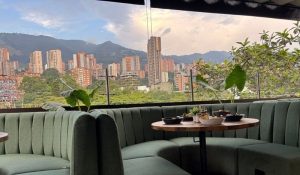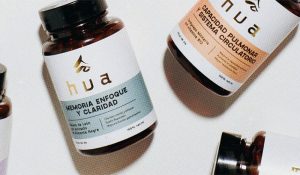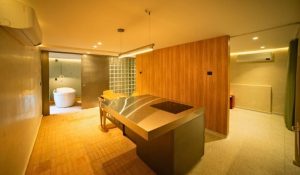In today’s fast-paced digital world, where information is consumed in visual bursts, images have solidified their role as the universal language of online communication. For the hospitality industry, this truth is even more pronounced. A hotel doesn’t just sell rooms—it sells experiences, ambiance, memorable moments, and the promise of unmatched comfort or escape. And the most effective way to communicate all this in the digital landscape is through high-quality, compelling photographs.
However, in my 15+ years of experience as an SEO expert, I’ve seen that while visual quality is non-negotiable, the technical optimization of those images for SEO is equally crucial—and too often overlooked. Attractive, well-optimized images not only dramatically enhance the look and feel of your website, but they also have a direct impact on your search engine rankings and, ultimately, your direct booking performance.
This article will deeply explore the importance of image optimization for hotels. We’ll break down best practices and the most effective strategies to maximize your website’s performance, improve your visibility on Google (both in general and image search), and drive a steady stream of direct bookings—minimizing your reliance on costly OTAs.
The Vital Importance of Image SEO for Hotels: More Than Just Aesthetics
In the highly competitive hotel industry of 2025, every detail matters. Today’s travelers don’t just look for unique, exciting experiences; they demand clear, immersive, and appealing visual information about the hotel where they plan to stay. High-quality photos are essential to building trust, sparking desire, and communicating your property’s value. But if these images aren’t properly optimized, they could negatively impact your website’s loading speed, search engine rankings, and ultimately, your revenue.
By optimizing your hotel images for SEO, you achieve several strategic benefits:
- Enhanced User Experience (UX):
Optimized images load faster, reducing user frustration and lowering bounce rates. A smooth experience encourages users to stay longer, explore more pages, and eventually book a room. - Increased Visibility in Search Results:
Optimized images are more likely to appear in Google Image Search, a major source of qualified traffic—especially for such a visually driven industry. Plus, image optimization contributes to overall site speed, a direct ranking factor for Google Search. - Direct Impact on Core Web Vitals:
Google’s Core Web Vitals—like Largest Contentful Paint (LCP), which measures how long it takes to load the largest element on a page (often a main image)—are crucial for SEO. Unoptimized images can hurt your LCP and therefore your rankings. - Builds Trust and Credibility:
A fast, visually appealing website with high-quality images that load seamlessly conveys professionalism and reliability—key decision factors in a trust-sensitive industry like hospitality. - Higher Conversion Rate (CR):
Well-optimized images don’t just improve your SEO—they can significantly increase your conversion rate. Travelers want a place that looks inviting and reliable, and photos play a crucial role in helping them visualize their stay.
Best Practices to Optimize Hotel Images for SEO in 2025: Your Detailed Checklist
Effective image optimization requires tackling both technical and content aspects.
1. Choose the Right Format for Each Image Type: Efficiency Meets Quality
- JPEG (.jpg/.jpeg): Still the most widely used format, ideal for detailed, high-quality photos such as rooms, pools, panoramic views, restaurant dishes, and guest experiences. Offers good compression for colorful, detailed photos.
- PNG (.png): Great for graphics, logos, icons, or images needing transparency (e.g., a logo over a background photo). It’s less compressed but retains quality, ideal for design elements with sharp edges.
- WebP (.webp): A modern, efficient format by Google. Offers excellent compression with or without loss in quality—ideal for reducing file sizes. Supported by most browsers and many CMS tools.
- AVIF (.avif): A newer format that surpasses WebP in compression. Compatibility is still evolving, but it’s worth considering for future-proofing.
- SVG (.svg): Ideal for logos, icons, and vector graphics. Scalable without quality loss and very lightweight.
2. Reduce Image Size Without Losing Quality: Speed Equals Conversion
- Compress Images: Use tools like TinyPNG, JPEG Optimizer, or Compressor.io, or plugins like Smush or Imagify for WordPress to reduce file sizes without visible quality loss.
- Optimize Dimensions: Don’t upload 4000px-wide images if they’ll only display at 800px. Resize before uploading.
- Lazy Loading: Implement lazy loading so images load only when users scroll to them, improving initial load speed.
- Use a CDN (Content Delivery Network): A CDN stores copies of your images on servers around the world, delivering them from the closest location to reduce latency and boost speed.
3. Use Descriptive, Keyword-Rich File Names: Give Google Context
Avoid generic file names like IMG_1234.jpg. Instead, describe the image and include keywords and location.
Examples:
- luxury-room-hotel-poblado-medellin.jpg
- infinity-pool-hotel-binn-medellin.jpg
- romantic-dinner-elcielo-restaurant-medellin.jpg
Make sure filenames are relevant to both the image content and the page it appears on.
4. Use Optimized Alt Text: Accessibility and Advanced SEO
Alt text is a textual description of an image shown if it can’t load, and it’s used by screen readers for accessibility. It’s also a key SEO factor.
- Write Clear Descriptions: Each image should have concise, specific alt text explaining what’s shown.
- Include Keywords Naturally: Avoid keyword stuffing. Describe the image while incorporating relevant keywords if possible.
Good Example:
alt=”Luxury room with panoramic view of Medellín at Binn Hotel, featuring a king-size bed and balcony.”
Bad Example:
alt=”luxury hotel Medellín hotel El Poblado boutique hotel Medellín pool hotel Medellín”
5. Implement Responsive Images: Mobile Adaptability
Mobile optimization is a top SEO priority in 2025.
- Use srcset and <picture>: These elements allow browsers to choose the best image based on screen size and resolution, improving load time and experience.
- CSS Responsiveness: Use styles like max-width: 100%; and height: auto; to ensure images scale properly.
- Test on Devices: Always test your images on different mobile devices and tablets.
6. Create an Image Sitemap: Help Search Engines Crawl Your Images
Just like pages, images need to be crawled and indexed.
- Include image URLs in your main XML sitemap or a separate image sitemap, and reference it in your robots.txt or Google Search Console.
- Don’t Block Images: Make sure robots.txt isn’t blocking image files.
Especially useful for image-heavy websites or when images aren’t directly linked in content.
7. Implement Schema Markup for Hotel Content: Structured Data for Google
Schema Markup (structured data) helps Google better understand your content.
Relevant Schemas:
- Hotel Schema: For general hotel info (name, address, phone, reviews).
- HotelRoom Schema: For room types—describes amenities, price, and image URLs.
- ImageObject Schema: To describe the image itself (often nested within other schemas).
- Review Schema: To show ratings and reviews in search results.
Benefits: Enables rich snippets (e.g., room image, price, rating), improving visibility and CTR. Helps Google understand that a specific image represents a specific room type.
Implementation: May require technical knowledge or the use of plugins like Yoast SEO or Rank Math for WordPress, or help from your web developer or SEO agency.
8. Global Site Speed Optimization: The Crucial Conversion Factor
Image optimization is critical to site speed, which affects all aspects of SEO and user experience.
- Focus on Core Web Vitals: Largest Contentful Paint, First Input Delay, Cumulative Layout Shift.
- Use Tools: Google PageSpeed Insights, Lighthouse, GTmetrix to diagnose issues and get specific recommendations.
- Fast Hosting: Use a high-quality hosting provider optimized for media-rich websites.
How Optimized Images Can Skyrocket Your Hotel’s Direct Bookings
Image optimization isn’t just technical—it’s a direct marketing strategy.
- Boost Conversion Rates: Well-optimized, high-quality images not only help rankings but also build trust and visually engage potential guests.
- Showcase the Best: Highlight your top rooms, pools, restaurants, spas, event spaces, and unique views.
- Experience-Driven Photos: Use real guest moments, outdoor dining, cooking classes, or spa relaxation to tell a visual story.
- Increase Image Search Visibility: Optimized images increase the chance of showing up for visual searches like “hotels with pools in Medellín” or “El Poblado hotel views”—capturing high-intent organic traffic.
- Create a Cohesive Visual Experience: Travelers seek a consistent, immersive visual experience. Use optimized, branded images to reflect the stay you’re promising. Misleading photos damage trust and bookings.
- Support Blog and Social Content: Optimized images enhance your blog (e.g., “Top Things to Do in Medellín”) and social media posts, increasing engagement and reach.
Your Hotel Images: Your Most Powerful SEO Asset for Direct Bookings
Optimizing your hotel’s images for SEO isn’t just a technical checklist—it’s a complete digital marketing strategy that directly impacts user experience, search visibility, and, most importantly, direct bookings.
From choosing the right format and compressing images without losing quality, to writing keyword-rich file names, optimized alt text, implementing responsive design, image sitemaps, and schema markup—every step matters.
In the competitive hospitality market of 2025, you can’t afford unoptimized images that slow down your site or are unreadable by Google. If you haven’t optimized your photos yet, now is the time. A flawless, SEO-driven image strategy is your best ally to stand out, build trust, and turn visitors into loyal guests.
Need help turning your hotel photos into powerful SEO tools that skyrocket your direct bookings?
At Digisap, we combine over 15 years of SEO expertise with deep hospitality industry knowledge to implement best-in-class practices.
Contact us today for a free consultation! Click here to start maximizing your hotel’s visual potential: https://digisap.com/contacto/





